What Is Butchcamp? An Explainer by Way of 10 Past Met Gala Looks
In this op-ed, artist Isabella Toledo and graphic designer Rosie Eveleigh, founders of the Instagram project @ButchCamp, explain what the term butchcamp means by pointing out the butchcampiest Met Gala moments.
Make no mistake, camp has always been a primarily homosexual schtick, yet gay men have been the gatekeepers of the camp canon for most of its history. ButchCamp is a project that deals with the dual functions of camp: camp as an aesthetic (things that can be described as camp) and camp as a sensibility (a camp way of looking at things). We added the word butch because it’s the campiest word in the lesbian lexicon. We seek out a sort of sapphic strand of camp and patiently await the return of its subversive potential. In anticipation of this year’s Met Gala theme, “Camp: Notes on Fashion,” we at ButchCamp went in search of anything in the Met Gala’s history that had that ineffable whiff of camp dykery, and then dug deeper still. Here is what we found:
BUTCHCAMP PRIMER
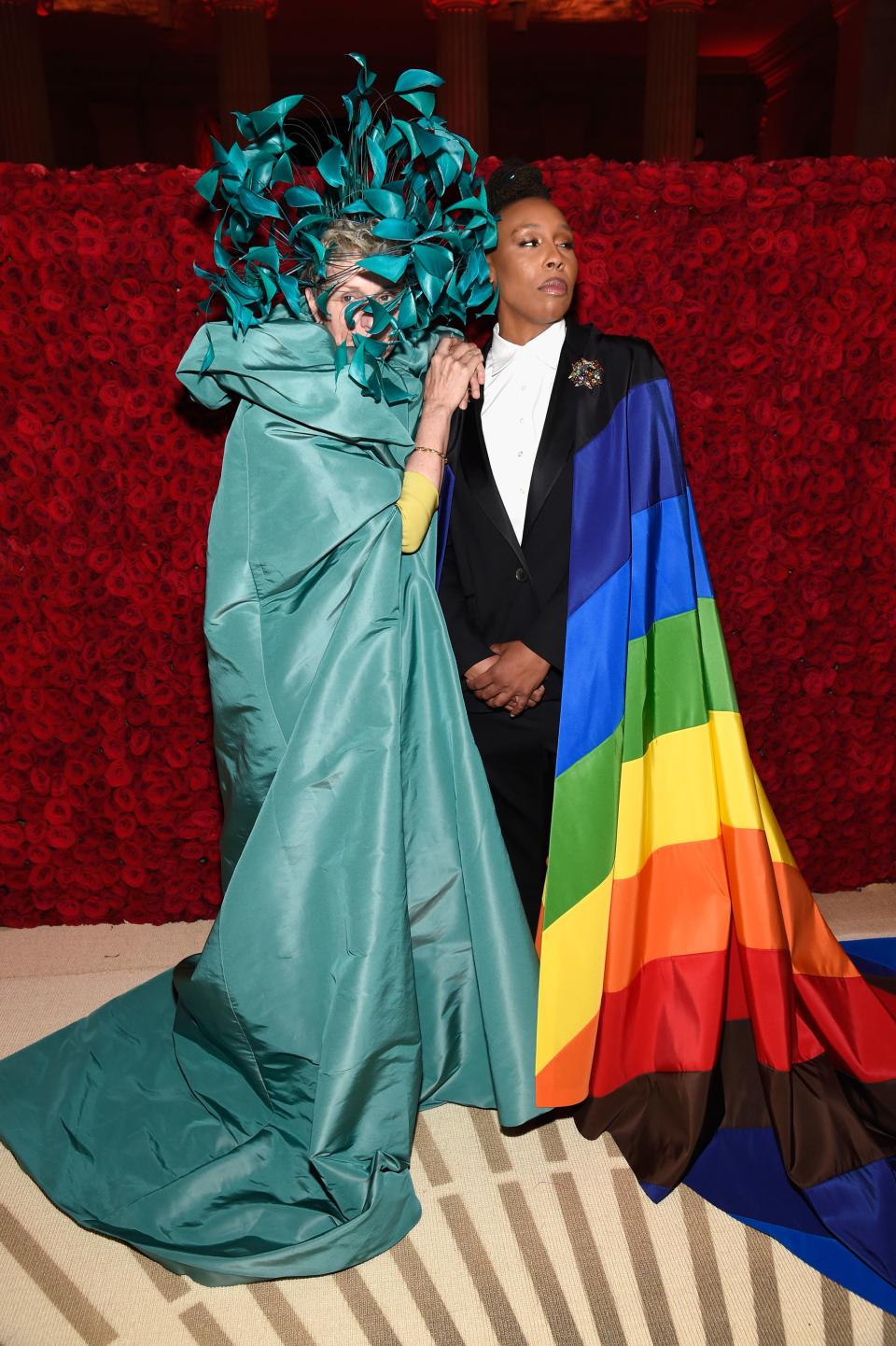
955766854
Frances McDormand and Lena Waithe posing at the 2018 Met Gala probably represents the most contemporary, clear example of butchcamp in action. One could be forgiven for thinking that the butchcampiest of the pair here is Lena Waithe, who is, after all, a butch lesbian in a rainbow cape. But as queer, political, and inspiring as Lena’s sincere out’n’proud stance was, Frances takes the camp cake. Dressed way-above-the-head-to-toe in couture Valentino, practically makeup-free, and upstaging everyone with her teal feather headpiece and matching cape, Frances ended the night gyrating in wild abandonment in one of the Metropolitan Museum’s portrait rooms. She took the most absurd elements of fashion, gala behavior, celebrity, and wealth, and used them as extensions of her own formidable personality, breaking the seriousness of what is, at heart, a fancy fundraiser. Hers was the kind of marginal, subversive, whackjob behavior that was at the core of camp’s original sense of irony.
BUTCHCAMP SOCIALITE
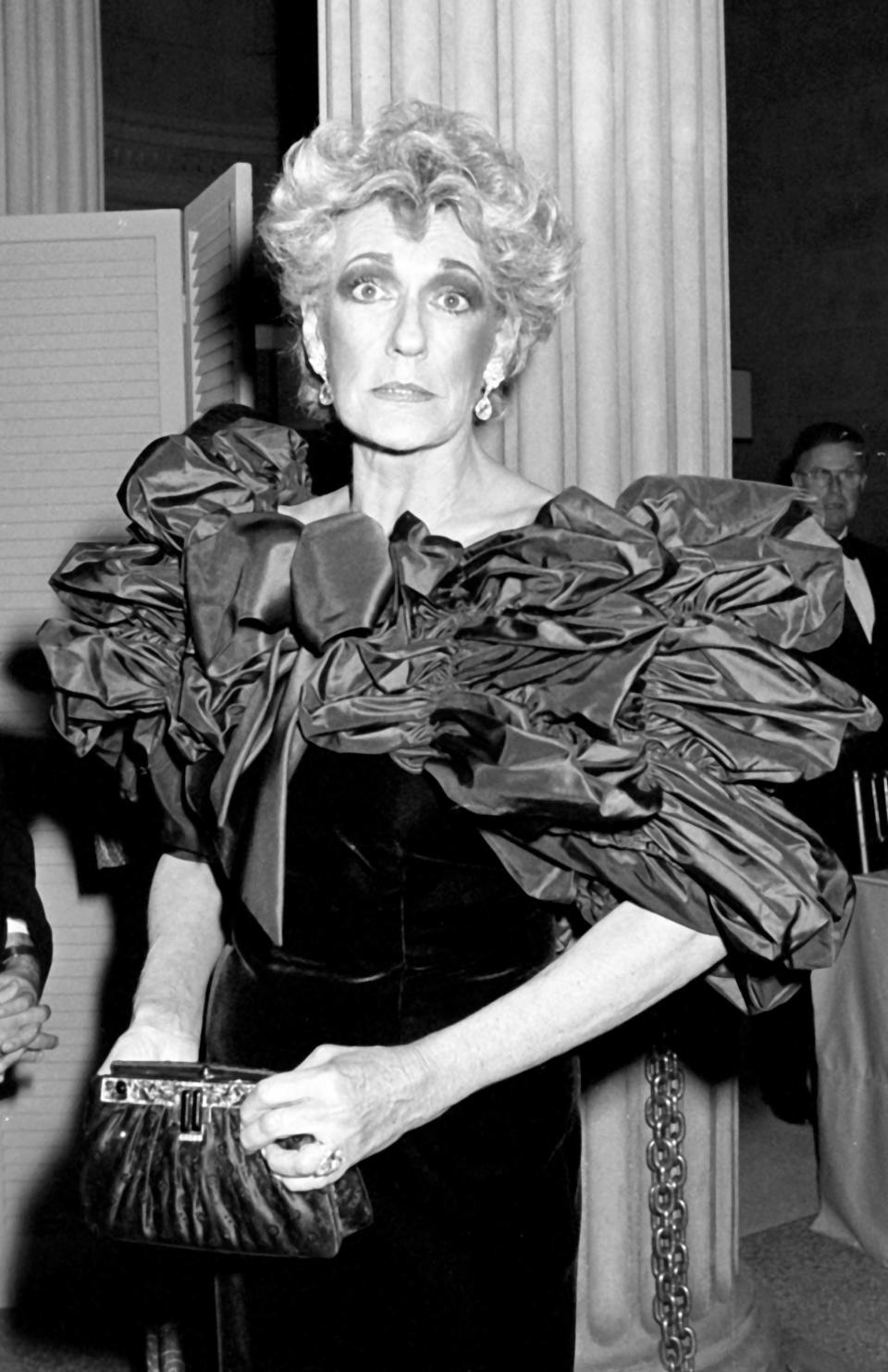
870900120
In his book about opera divas, Wayne Koestenbaum once wrote, “When we experience the camp rush, the delight, the savour, we are making a private airlift of lost cultural matter, fragments held hostage by everyone else’s indifference.” In camp, these fragments, the lost cultural matter, become a private code, like windings, filled with an esoteric significance that, once recognized, becomes so enthralling it must then be shared so as to be understood by the like-minded. “The camp sensation is produced by our own joy at having discovered the object, in having been chosen, solicited, by it.” So it went when we were solicited by two socialites inextricable from the history of the Met Gala: Pat Buckley and Slim Keith. How does one accurately describe the thrill that this black-and-white portrait of Pat Buckley begets? Is it, on a rather base level, the androgyny of the name Pat? Or the fact that she was an enormous, vigorous woman, with heavily lidded eyes and a lot of power, who would pose, on a whim, with her Cavalier King Charles Spaniels like this:
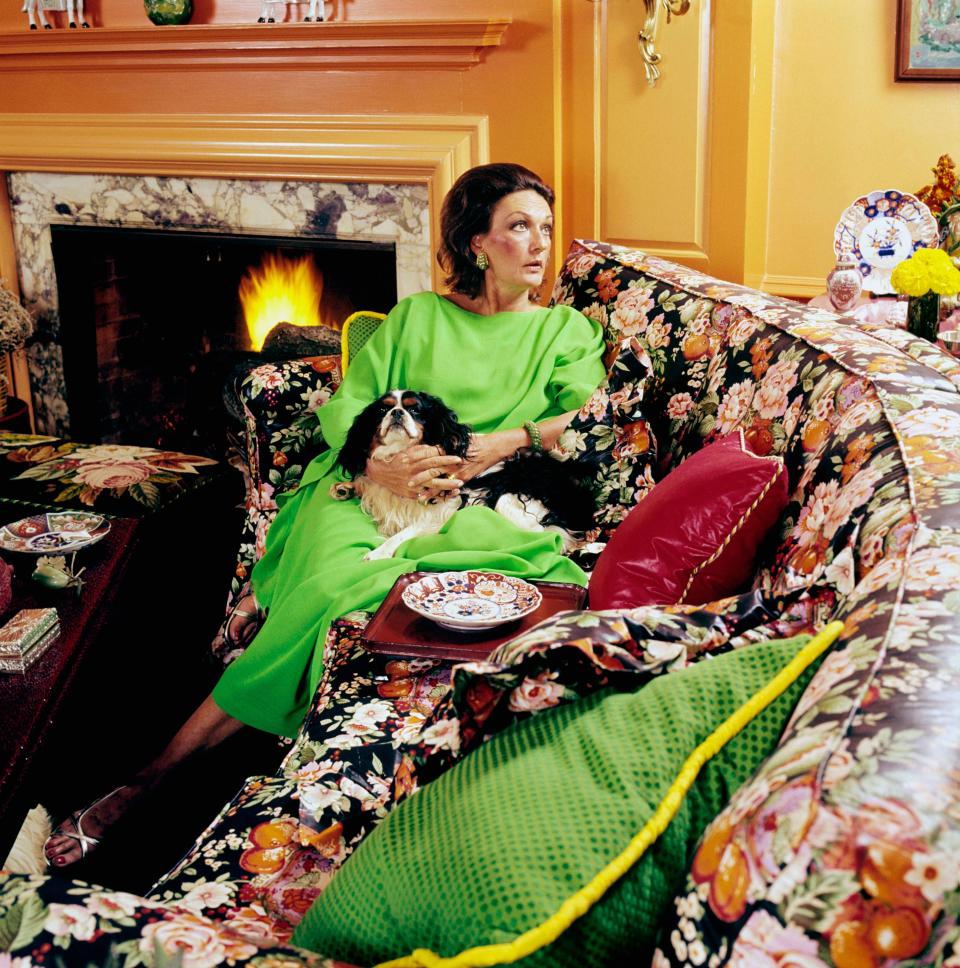
503283882
In camp, whether or not one is de facto gay is quite beside the point, though it helps. Pat Buckley was, alas, no dyke. She was married to notorious homophobe William F. Buckley Jr. Following his repulsive AIDS-tattoo article, Pat reportedly raised more than $2 million for an AIDS-care program at New York’s St. Vincent’s hospital. Fundraising was her bag, and her long-held position as fundraising chairwoman at the Met’s Costume Institute brought us not only the pierrot portrait above but an anecdote from The New York Times that reads as the height of camp:
The phone rang in Oscar de la Renta’s showroom at 550 Seventh Avenue. Pat Buckley, charity chairwoman, was on the line. “Oscar, how do you feel about pagodas on the tables?” she said in her husky voice.
“Pagodas,” Mr. de la Renta mused, brightening. “I love the idea.”
A few minutes later, the phone rang four floors up, in Bill Blass’s showroom. He, too, loved the pagodas-on-the-tables idea.
“Good,” Mrs. Buckley said. “Now, how about tangerine parasols?”
“Nifty,” Mr. Blass said.
“And figured toile-de-Jouy?”
“Do it, baby.”
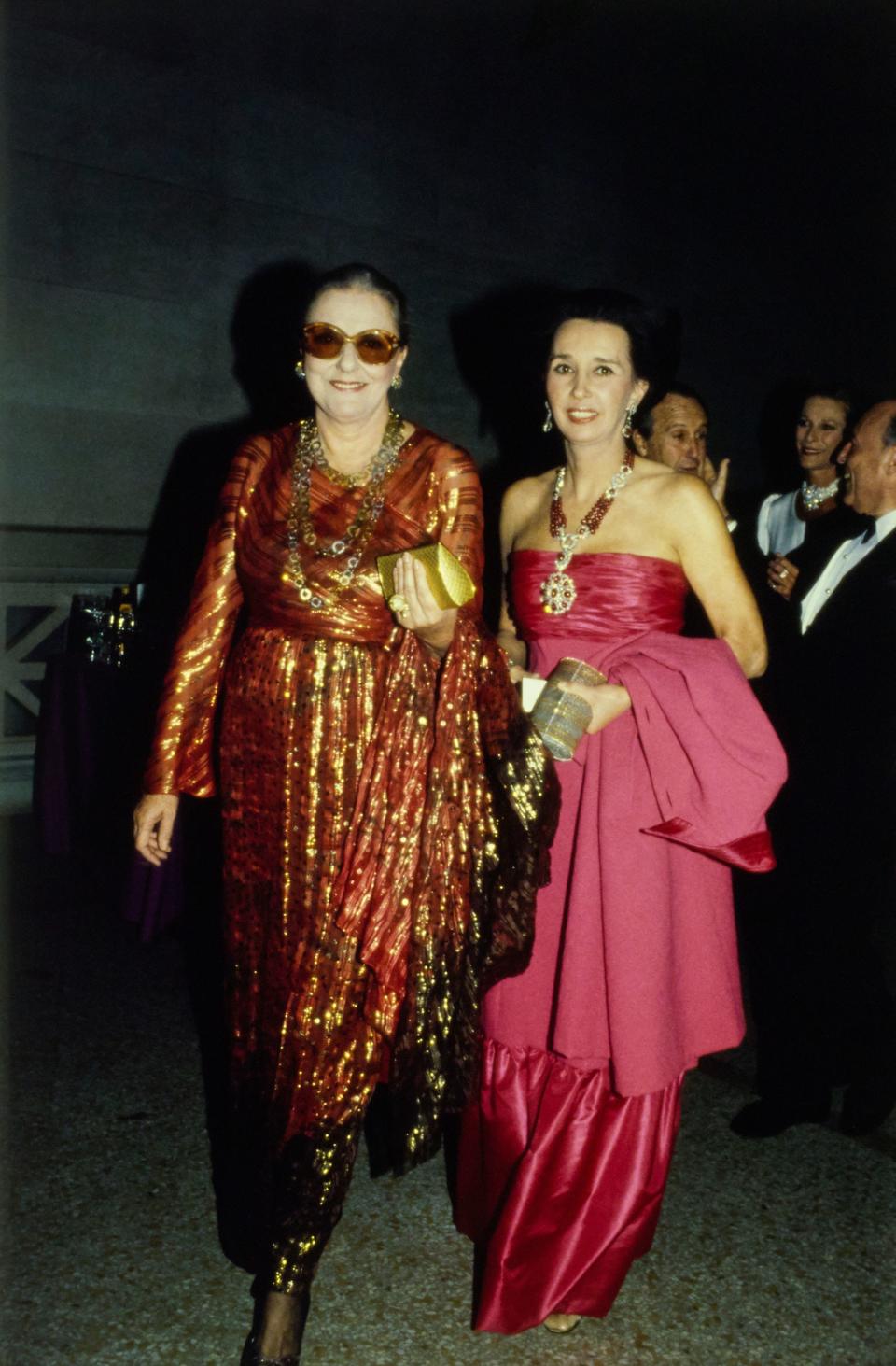
969806200
And what of the deliciously named Slim Keith? We found her tucked away in the Getty Images archive, russet-robed and resplendent, sporting a sort of Umm Kulthum getup: dark glasses indoors, hair pulled back, all rust and sparkles. Terry Castle once wrote, “The famous [Susan] Sontag ‘look’ always put me in mind of the stage direction in [Noël Coward’s] Blithe Spirit: ‘Enter Madame Arcati, wearing barbaric jewellery.’” Barbarically bejeweled, Slim is seen here shoulder-to-shoulder with an “unidentified friend.”
All lesbians in search of a Herstory know the thrill of an “unidentified friend,” sister to the “unknown female,” or simple “roommate” in all old-timey picture captions. This will-o’-the wisp and tenuous set of first impressions was in want of research to support the suspicion that more butchcampery lay beneath this Met Gala appearance by Mrs. Keith. How vindicating it was, then, to find pics of the young socialite, in the days when she was known as Slim Hawks (swoon), embodying all the palazzo pant glamour of Katharine Hepburn–cum–Lauren Bacall. Should we be surprised, then, to discover that Slim and Hepburn had each had a relationship with Leland Hayward? Or that Slim, according to her autobiography, “discovered” Bacall and had served as Howard Hawks’s inspiration for Bacall’s debut film role, in To Have and To Have Not? We Should Have Been Surprised, But We Were Not.
We added the word “butch” because it’s the campiest word in the lesbian lexicon.
BUTCHCAMP BOYS AT THE MET
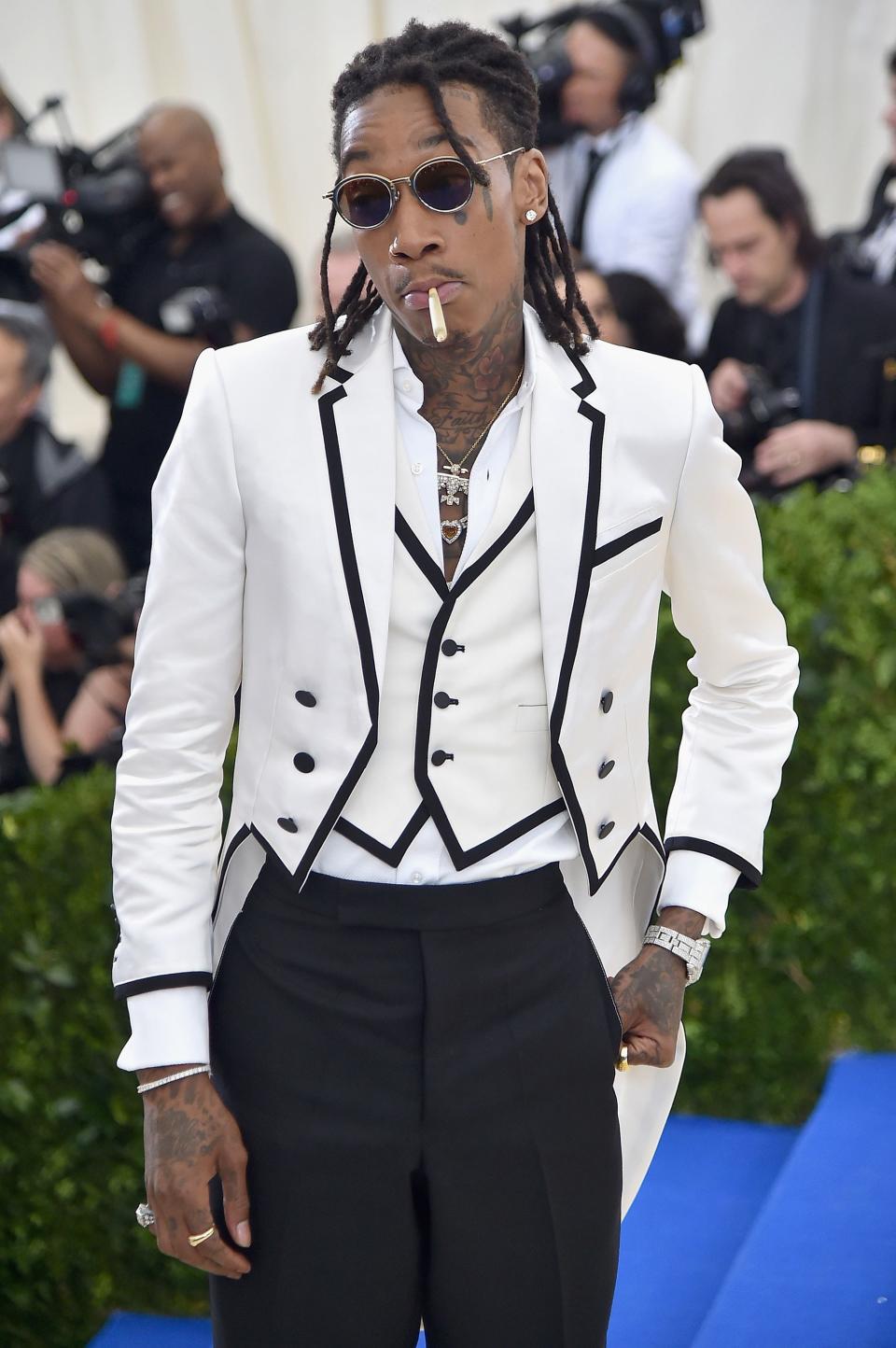
675645418
Some of our favorite butchcamp icons are men who refuse to commit to the sidelines circumscribed by banal suit options — André Leon Tally, Alan Cumming, and Wiz Khalifa have all gone fishing in the gender pool of camp. With shoulder-length locs, dripping in diamonds, and suited in the slimmest-fitting sort of tap-dance getup imaginable, Wiz looks like the prime prince in a stud moodboard. We’d like to think the sunglasses were a nod to Slim Keith. And of course the perpetually unlit joint tops off the campery.
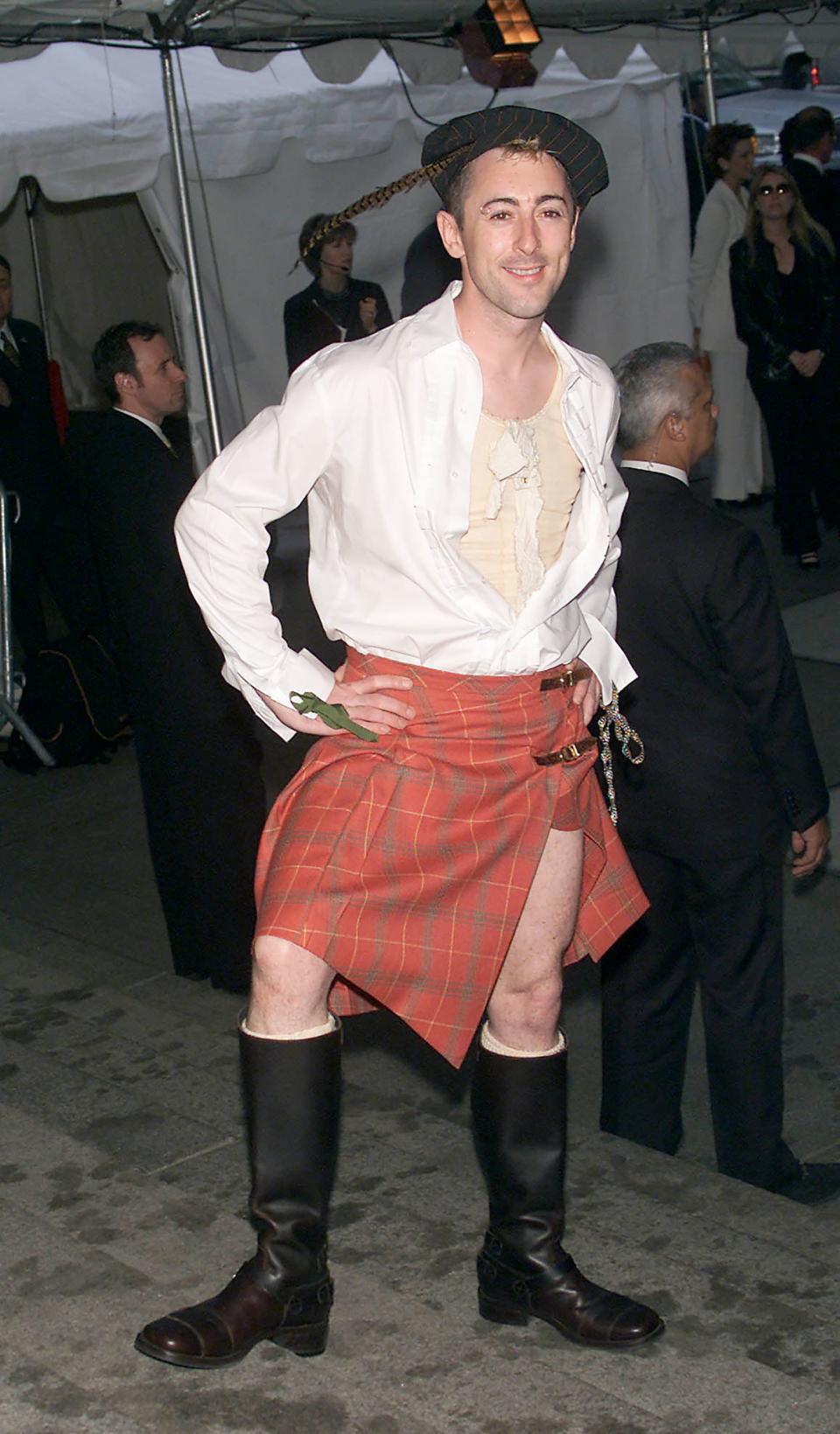
2308404
Alan Cumming, never one to be outcamped — in life as at galas — wore a semitraditional Scottish ensemble to the ball: kilt, feathered beret, and bows adorning the cuffs of his open white shirt. Those boots below a peek-a-boo thigh are butchcamp incarnate. That the kilt is ostensibly a macho uniform has always struck us as an amazing, enduring farce, not because of the skirt but because of the teeny-tiny knives stuffed in stockings, and the promise of no knickers. Met Gala looks and themes often tend to mismatch, which adds to their charm: This tartan ensemble would have been very on-the-nose from a Scotsman had it been for 2006’s “AngloMania: Tradition and Transgression in British Fashion,” but it is made all the more bizarre for having gone with 2001’s theme, “Jacqueline Kennedy: The White House Years.”
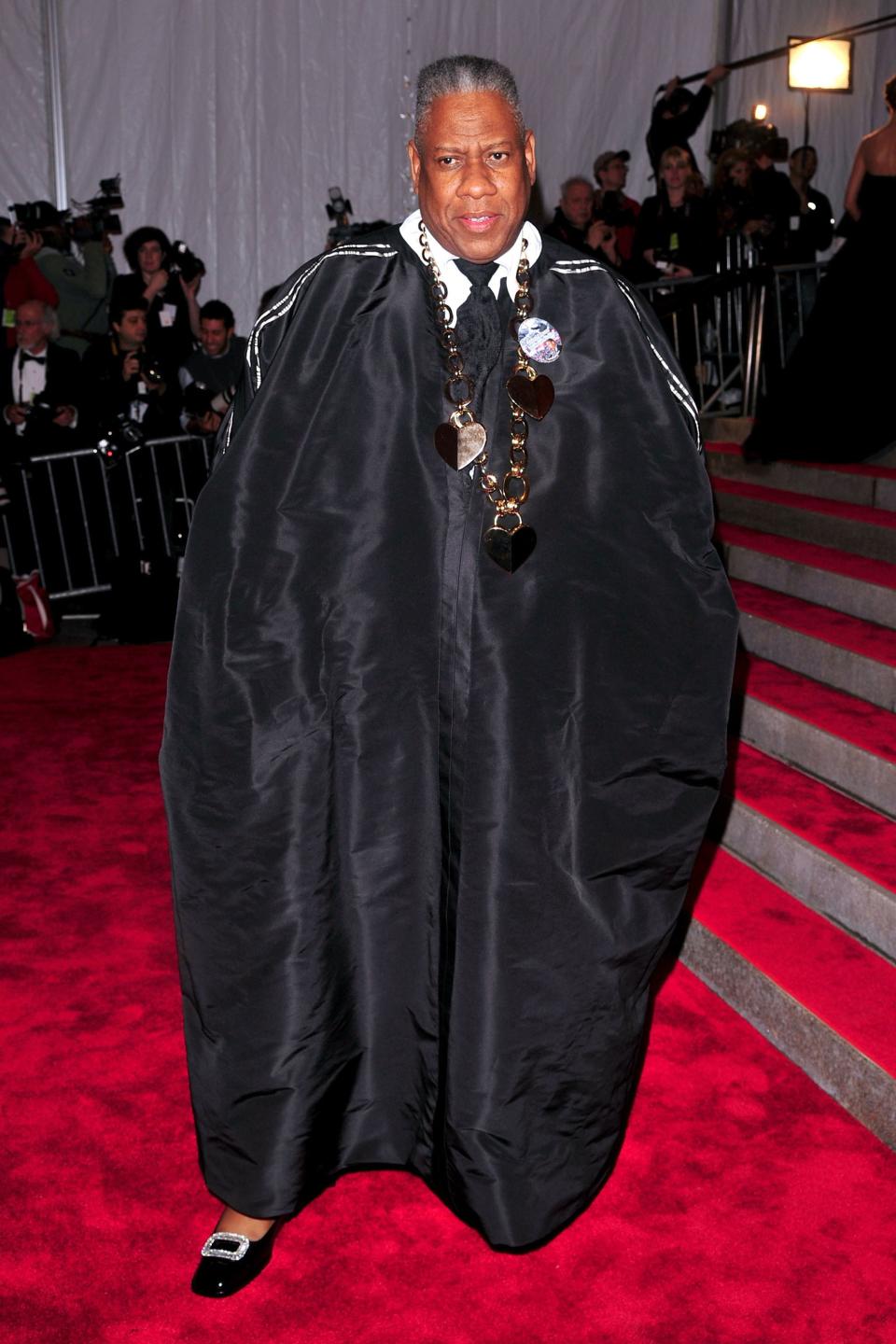
660023416
Then, of course, the utter regality, l’amour de soi of a caped André Leon Talley. It’s in the combination of garments: the masculine broad form of a tailored suit, draped with a beautiful billowing cape — embroidered or glistening, always a statement — making a point of his dainty buckled Shakespeare slipper. A veteran of the gala since 1974, ALT — who would have no doubt aced 1972’s “Untailored Garments” theme — has been a life-long cape enthusiast. In 2014, stuck in a lift at an Oscar de la Renta show, ALT, it was revealed, had actually been wearing Uggs underneath his cape for three years — but no one had ever noticed.
BUTCHCAMP FANFICTION
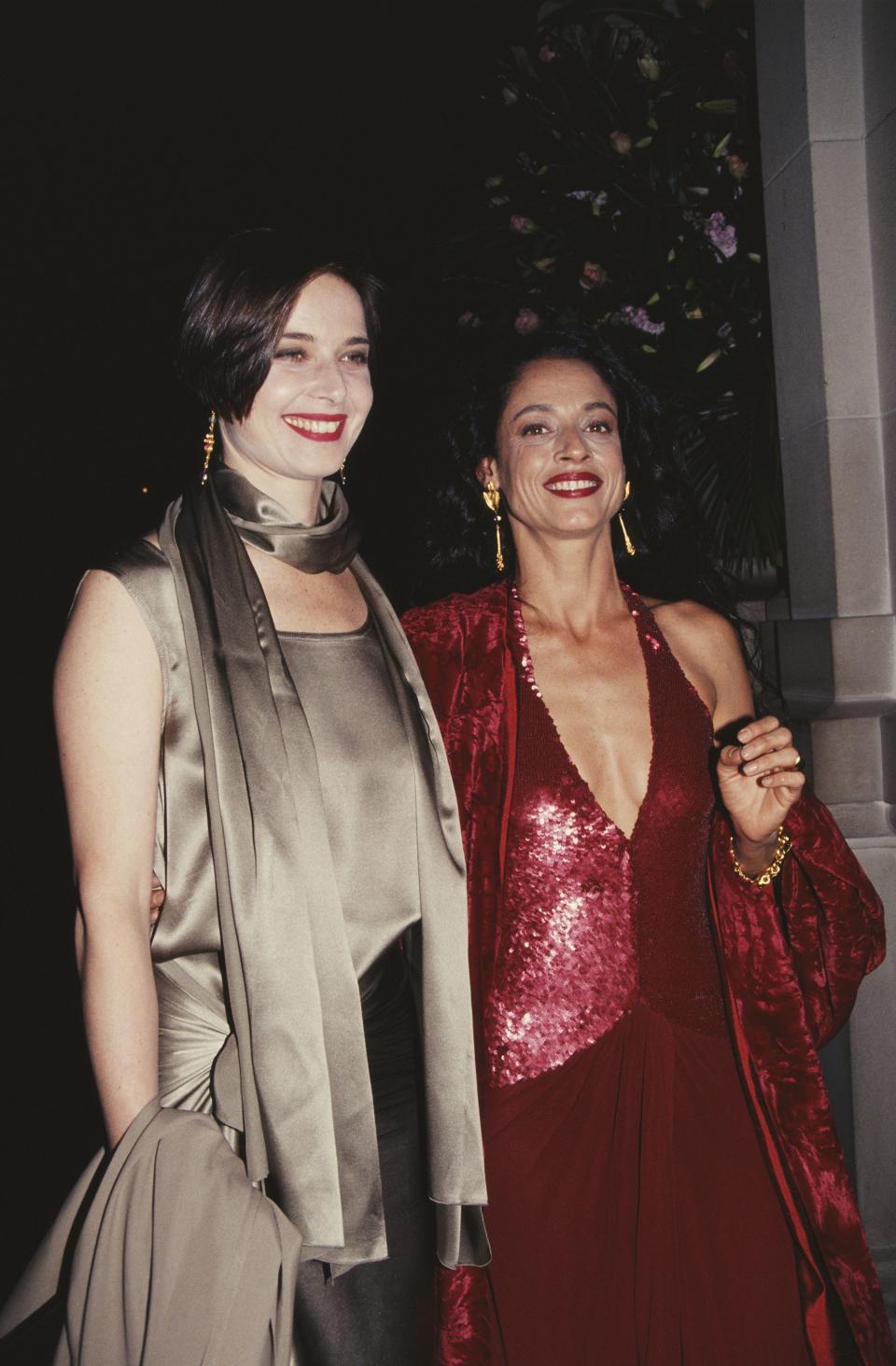
503121651
To be excluded from the cultural narrative means having to make up your own through a kind of retroactive magical thinking. Taking what are clearly platonic public relationships and then reimagining them as lesbian shenanigans is the inevitable consequence of subvisibility, like donning a pair of lavender-tinted specs. Isabella Rossellini and Sonia Braga showing up to the 1989 Met gala as dates is, of course, the stuff of high femme fan fiction. Get yourself a girl who looks at you the way Braga looked at Isabella on this night. Once again, not dykes? Not the point! This blurring of fact and fiction arrives from a sort of possessive desire (both have had their little day in the sun when it comes to Lesbian Culture: Rossellini in her besuited Bruce Weber shoot and Braga as Samantha’s chaotic lover on Sex and the City).
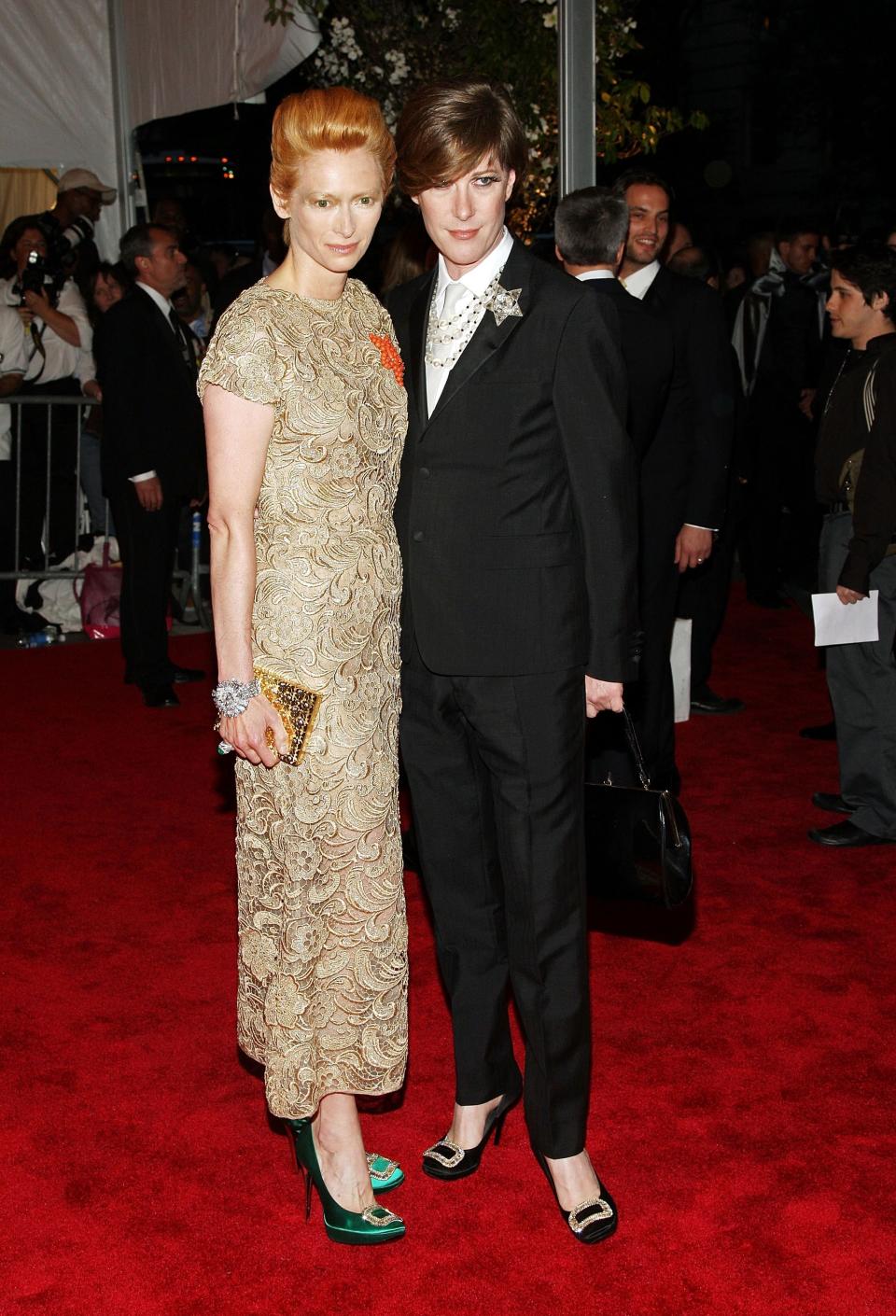
81006165
Then there’s this pic of Tilda Swinton and Mx Justin Vivian Bond from 2008, which requires only the slightest stretch of the imagination. Just two ethereal babes wearing matching starred brooches and buckled, courtly, Neo-Rococo Roger Vivier heels — need we say more? This demonstrates Tilda’s intuitive knowledge and understanding of a different kind of sign: power in the choice of gala companions.
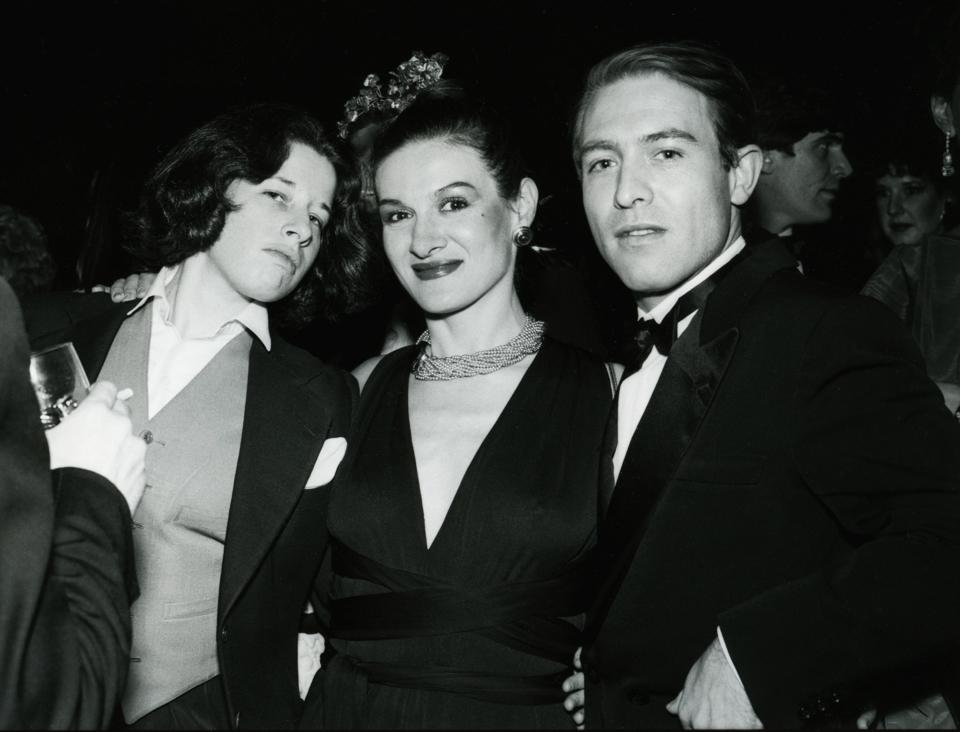
585841592
Finally, there’s Fran Lebowitz, patron saint of butchcamp, arm wrapped around Paloma Picasso’s waist. Would that they had, you know? Would that we could know more.
The naming of camp as this year’s theme is bittersweet for those of us who spend a lot of time thinking about it. Sweet in that at least one person will be less likely to assume we’re talking about camping in the outdoorsy, tent sense. Bitter, insofar as true camp is arguably, at its heart, antithetical to fashion. You know, Sontag apparently later avoided discussion of her essay “Notes on Camp,” according to a firsthand account, from 1995, relayed by Terry Castle. By then the melding of so-called highbrow and pop culture she had circumscribed was a completely mainstream notion.
Filmmaker Bruce LaBruce’s “Notes on Camp/Anti-Camp” gives us the clearest picture of what took place: “Camp is now for the masses. It’s a sensibility that has been appropriated by the mainstream, fetishized, commoditized, turned into a commodity fetish, and exploited by a hyper-capitalist system, as Adorno warned. It still has many of the earmarks of ‘classic camp’ ... But what’s lacking is the sophistication, and especially the notion of esotericism, something shared by a group of insiders, or rather, outsiders, a secret code shared among a certain ‘campiscenti.’”
When hopeful, we reckon attendees at this year’s “Camp: Notes on Fashion” will prioritize what Sontag described as the earmarks of classic camp: “a love of the exaggerated, the ‘off,’ the things-being-what-they-are-not ... the metaphor of life as theatre.” We fear, however, they will just go for kitsch. Flamingos, tiffany lamps, the shrimp cocktail — the things that cause camp to be so often confused with kitsch. Ultimately, the kitsch does not realize its own discrepancy in value, whereas camp does. If camp is an attitude toward kitsch, it’s an attitude we’ll be on the lookout for come the first Monday in May.
Follow @Butchcamp for more commentary on all things butchcamp.

